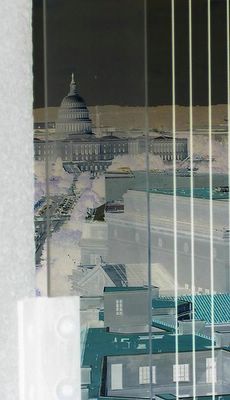After Winter Floods, Signs of Life in the Potomac Gorge

ODDLY ENOUGH, one of the most biologically diverse natural areas in the Mid-Atlantic lies inside the District of Columbia’s borders. Few people, however, know where to find it. And right now is perhaps the best time to see the landscape change.
The Potomac Gorge, which stretches from a point upriver from Georgetown to Great Falls beyond the District boundary, is a wild area reshaped annually depending on the severity of flooding. In the vicinity of Little Falls, just upriver from Chain Bridge, the river channel narrows and fast-moving floodwaters can litter the floodplain, which stretches up to the C&O Canal, with boulders, trees, sediment and other debris.
 I used to live on the bluffs overlooking this wonderful natural area and have spent a good deal of time exploring the gorge, which falls largely under the jurisdiction of the National Park Service. Earlier today, I went on a 7 1/2-mile roundtrip hike into the gorge from my apartment and for the first time, have seen this landscape fresh after floodwaters have receded.
I used to live on the bluffs overlooking this wonderful natural area and have spent a good deal of time exploring the gorge, which falls largely under the jurisdiction of the National Park Service. Earlier today, I went on a 7 1/2-mile roundtrip hike into the gorge from my apartment and for the first time, have seen this landscape fresh after floodwaters have receded.Currently, there’s a fresh layer of sediment that has already sprouted new plantlife. Water has pooled at different elevations, abandoned by receded floodwaters which have drained away through a complex network of streams and rivulets back to the river channel. The other dominant sign of intense flooding: The vegetation that had survived the winter has been bent over in a downstream direction.
Once spring takes hold and this area leafs out, it will be quite difficult and treacherous to navigate if you leave the established trails between the C&O Canal towpath and the river’s rock-strewn channel. So I got the timing just right — after the winter floods and before spring has sprung.
I was not, however, able to hike all the way to the river channel at Chain Bridge because of the way the flooding had left behind pooled water. Normally, I like to go to hike there to a point opposite Pimmit Run on the Virginia side of the river, where there was once a mill where the Declaration of Independence was stashed away safe keeping as the British were torching Washington in 1814.
From way down at the bottom of the gorge looking up at the Chain Bridge, it’s hard to imagine that floodwaters could rise so high as to wash away the bridge’s superstructure. That happened in 1936, when the Potomac had its largest recorded flood. The bridge was rebuilt atop the stone piers that date to the 1870s. On one of them, there’s some 1880s-era graffiti if you look closely enough.





